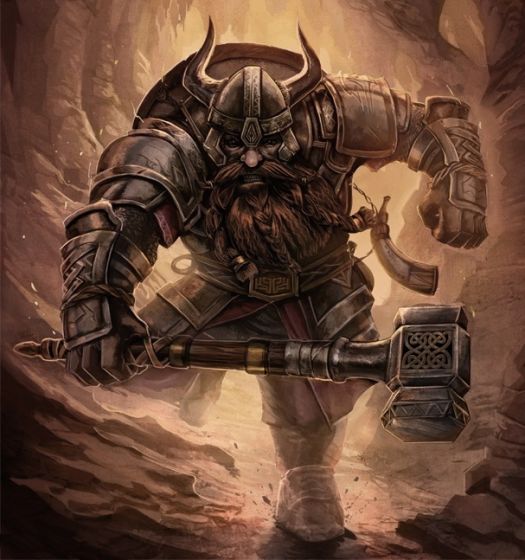Overbearing
Overbearing is a form of melee combat where the combatant aims to physically push or compel an opponent to move back from their defensive position, or combat hex, during battle. The combatant, often with a strong and sturdy posture, lunges or advances toward their opponent with unwavering determination. Their muscles tense as they use their body's mass and strength to execute the maneuver.
The attack can be visualized as a powerful shove or push, where the combatant's weapons and upper body make contact with the defender's body or shield. Designed to disrupt the defender's balance and footing, the attack works best as multiple combatants use this to break an enemy's thinly-held line in a large battle.
| Ratio of attacker to defender | Roll to hit modifier |
|---|---|
| up to 24% | cannot overbear |
| 25-32% | -12 |
| 33-41% | -9 |
| 42-58% | -4 |
| 59-71% | -2 |
| 72-87% | -1 |
| 88-116% | none |
| 117-141% | +1 |
| 142-175% | +2 |
| 176-250% | +3 |
| 251-350% | +7 |
| 351% or more | +10 |
Attack Roll
Before making a roll to determine a hit, combatants declare an intent to "overbear" their opponent. The combatant must then allocate all their action points (AP) for both the attack; this cost allows the combatant, if the overbearing succeeds, to freely advance one hex forward. Combatants with multiple attacks can roll to hit for each attack, but the movement cost remains the same. Each successful hit does cause 1-3 damage, adjusted for strength.
When attacking, a d20 is rolled as always. This is not a conventional attack, however; visualise two combatants locked in close quarters, pushing against each other while still holding their weapons and shields, rendering their weapons less effective than in a typical attack. As the table indicates, the attacker's weight is compared to that of the defender and the modifier obtained.
- For example, Caitlyn has a weight of 180 lbs. and wishes to push the 215 lb. Dray out of his hex. Caitlyn is 83.8% of Dray's weight, which by the table gives him a penalty of -1 to hit Dray's armour class.
Some may wish to account for the "whole weight" of both attacker and defender to be taken into account, including gear, armour and so on. It can be taken that the combatant's equipment is a detriment rather than a benefit, but this is for the DM to decide. Obviously, discounting gear enables the calculation to be made more swiftly, simplifying the action in combat.
Battle Movement
The image below illustrates the outcome of a successful overbear maneuver. In this scenario, Caitlyn presses into Dray's hex, forcibly displacing him from 0518. If Caitlyn's overbear attempt were unsuccessful and the far left picture would show the end of Caitlyn's turn. Instead
indicates the movement produced by a successful overbear. Caitlyn forces herself into pushing him back out of 0518. Were she not successful, no movement would occur. If it should happen that the damage done to Dray caused the latter to be stunned, Dray would not fall back another hex as indicated under those rules. And if Caitlyn were possessed of multiple attacks, she would be able to roll again to overbear, pushing Dray out of hex 0618.
Because of the amount of movement involved, Caitlyn cannot attempt to overbear and attack normally in the same round. A second attack to overbear presumes that the movement out of 0518 and then out of 0618 would all be a single movement over two hexes, not two separate movements. If the second attack were to fail, then the overbearing movement would stop where indicated.
Multiple Defenders
If Dray in the example above were supported by another combatant already standing in 0618, then the weight of that second combatant (Ewan) would be added to Dray's weight to determine Caitlyn's success at overbearing. This is because it's presumed that Dray can use the support of a defender in the second rank in order to hold his position. However, if Ewan were engaged with another attacker, so that he could not commit to supporting Dray's position, then Dray would be pushed into Ewan's hex.
Likewise, if there are multiple defenders in one hex, then Caitlyn would receive a +2 bonus to hit, but she would have to include the weight of all the defenders in that hex with regards to her success at overbearing. However, if the defenders have training to act in tandem in that one hex, she would not receive a +2 bonus. With a successful overbear with two opponents, it's assumed she has cleared the hex, pushing out both defenders.
See Also,
Crashes & Collisions
Charging
Unarmed Combat

